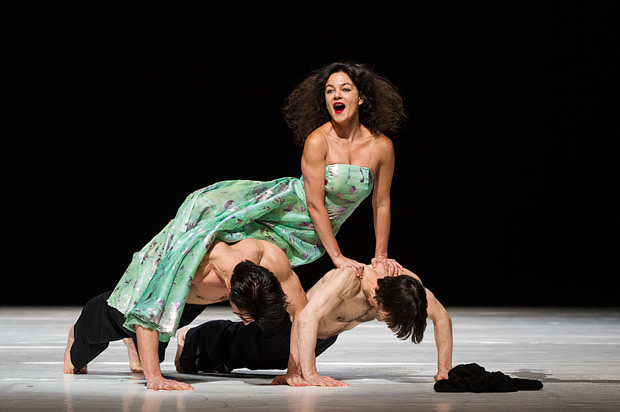
© Foteini Christofilopoulou. (Click image for larger version)
Tanztheater Wuppertal Pina Bausch
…como el musguito en la piedra, ay si, si, si…
★★★✰✰
London, Sadler’s Wells
11 February 2016
Gallery of pictures by Foteini Christofilopoulou
www.pina-bausch.de
Like all Pina Bausch’s pieces based on her company’s residencies in different cities, this one (which translates as ‘like moss on a stone’), inspired by Chile, is tantalising in its references. How much did Bausch and her dancers learn about the culture and politics of the countries they visited for a few weeks? What can audience members expect to recognise in a Bauschian collage of episodes and images if we are unfamiliar with the nation that inspired her?
The ready answer is that none of this matters. Bausch culled her ideas from her own and her dancers’ experiences, knitting them into a unique theatrical creation. Every spectator takes what they want from the spectacle, whether they pick up specific references or not: each person’s interpretation might be totally different. As time goes by, cities and customs change – and so do cast members. Original impulses for the material of each piece are bound to be lost.
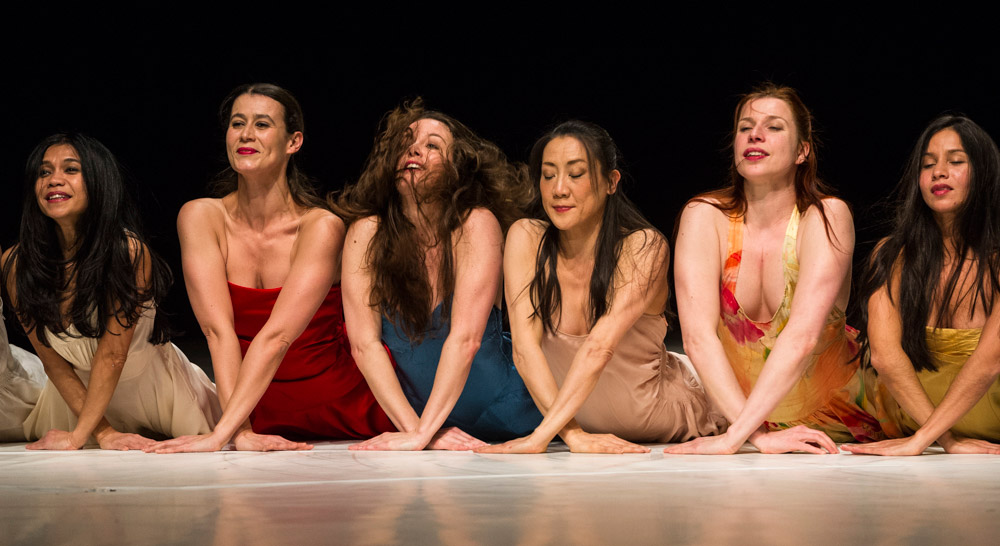
© Foteini Christofilopoulou. (Click image for larger version)
None the less, Bausch, a child of post-war Germany, was acutely aware of the political history of the countries that invited her company’s residencies. So como el musquito acknowledges the brutality of Chile’s military dictatorship headed by Augusto Pinochet in the 1970s-1980s, while celebrating the cultural traditions that survived it. In Santiago, the company rehearsed in a studio provided by Joan Turner Jara, the former partner of Victor Jara, singer, director and activist, who was murdered after the Pinochet coup in 1973.
Thus, when a man and a woman are violently pulled apart by dark-clad men, it’s possible to see them as the Jaras. When the man runs frantically, with Dominique Mercy, one of the company veterans, in pursuit, he could be trying to flee capture. So could a woman tethered by an elastic rope around her middle. Peter Pabst’s austere set of a white platform with fault lines that split open intermittently is threateningly unstable.
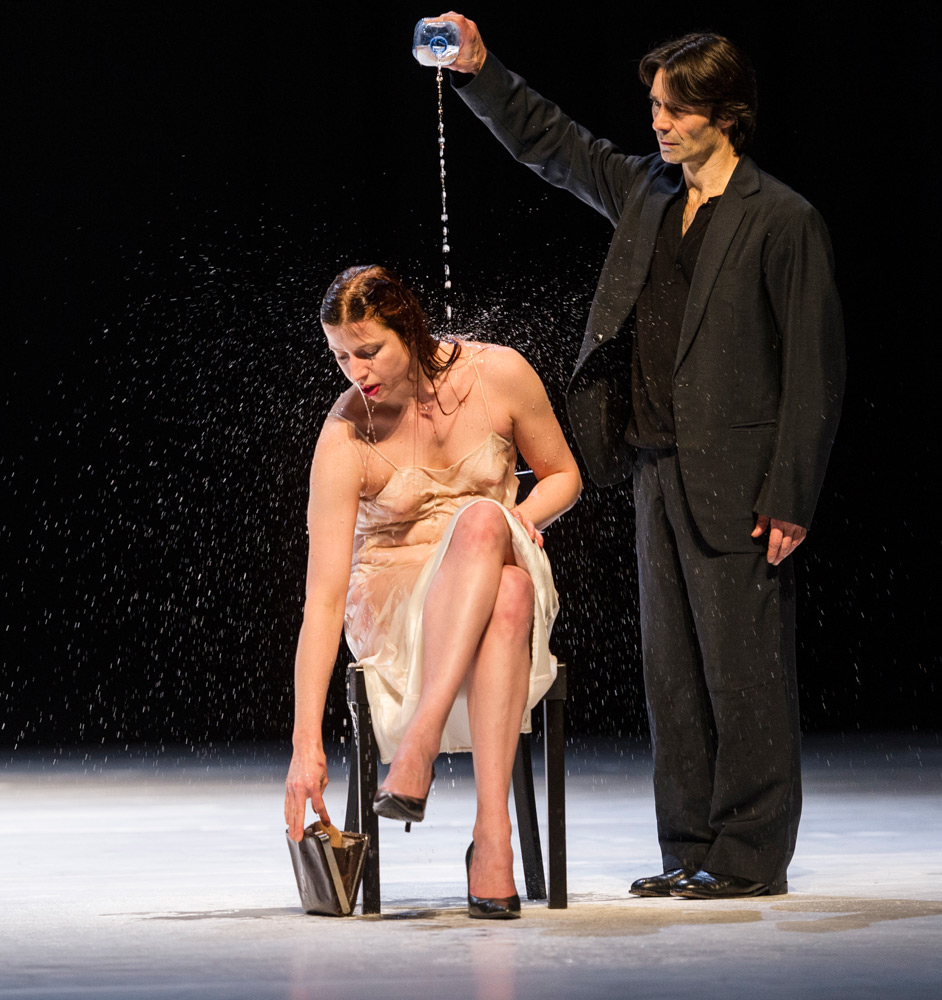
© Foteini Christofilopoulou. (Click image for larger version)
You could also see this last work as Bausch’s swansong to her company. She died of cancer shortly after it was finished in 2009. The title comes from the last song written by Violeta Parra, a Chilean folk music composer who influenced Victor Jara. In the lyrics, an older woman recalls being 17 again, overwhelmed by the power of first love. The women in como el musguito all look beautiful in long flowing ball gowns or bias-cut shifts by Bausch’s long-term designer Marion Cito. They are no longer humiliated by the men (Anna Wehsarg seems pleased to be cooled down by Rainer Behr pouring water over her as she does her makeup). They’re enabled to be gifted dancers, expressing themselves confidently in solos and enjoying performing together in group dances and line-ups.
The drawback to the structure of this piece, as in Bausch’s other later works, is that everybody gets to have a solo that could be transposed almost anywhere else. Many of the women’s solos are similar, with curving, plunging arms, flailing hair and footwork that keeps them rooted to the ground. Their dances are made distinctive by the performer’s personality and the choice of music, wistful, playful or defiant. Encounters with the men (or between men) aren’t developed before they are overtaken by the next episode.
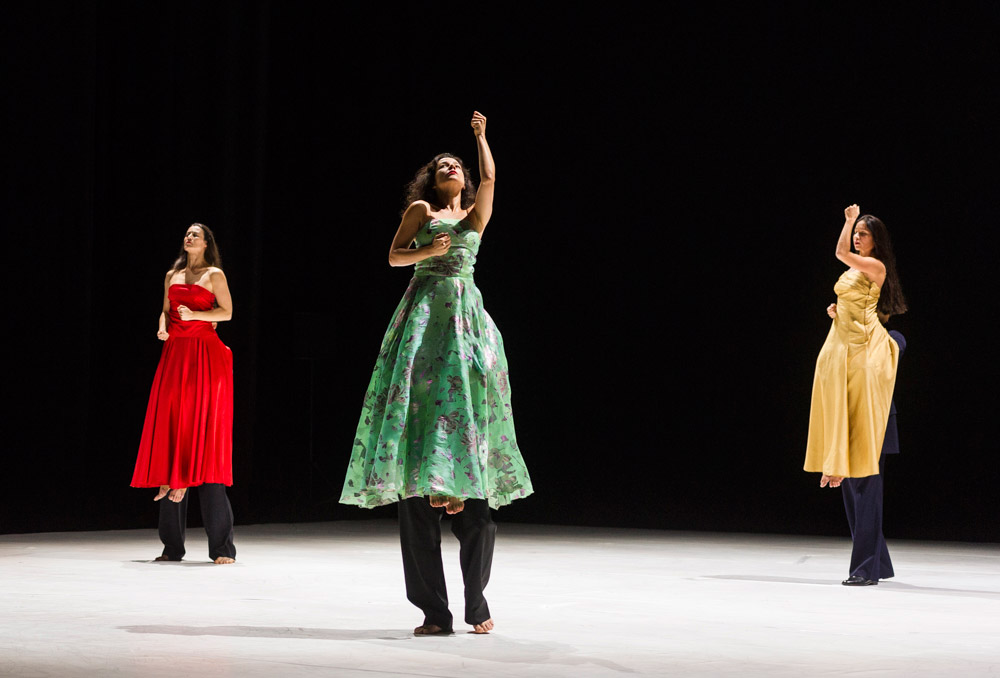
© Foteini Christofilopoulou. (Click image for larger version)
The men’s solos are more challenging because they are angular instead of rounded, using the floor inventively. Mercy, in his mid-60s, reveals the elegant lines of his ballet training in his upper body, before taking his leading place in a grooming line-up. Fernando Suels Mendoza is intensely rhythmical in a sinuous solo in front of a silken backdrop of windblown effects. Earlier, he had been seated on a chair, complimenting each woman as she passed him; though the audience laughs at the stereotype of a Latin lothario, the parade is a balletic convention – think of Colas taking the hand of all Lise’s girfriends as they dance round him in La Fille mal gardée.
Typically surreal scenes involve gender confusion – Pablo Aran Gimeno in tuxedo and red stiletto heels, Mercy with earrings beneath his fedora; absurd contact with the front rows of the audience; littering the stage with objects that are then, unusually, picked up and removed. Como el musguito is a rare tidy piece, leaving no trace of events over two-and-a half hours, apart from the fissures on the floor. It was a bit of a cop-out on Bausch’s part to end the piece as it began, unwinding the opening incidents: Mercy pursuing Rainer Behr, Behr being pulled away from Silvia Farlas Heredia, Herdia being passed around passively between several men being left alone, bereft.
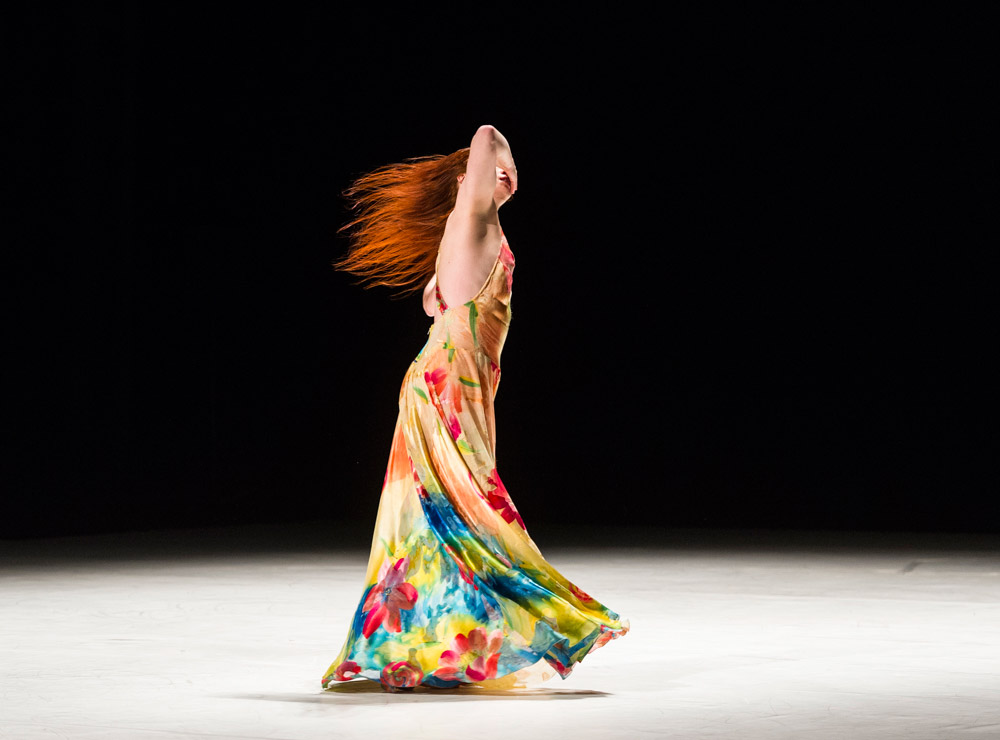
© Foteini Christofilopoulou. (Click image for larger version)
Inevitably, como el musguito feels elegiac, not least because of the wistful, melancholic music, with lyrics about lost love and time moving on. Young dancers have replaced Bausch’s family of veterans; young Chileans live in a very different country from their elders under Pinochet’s dictatorship. This was Bausch’s response to what she and her dancers experienced in 2009, pieced together like a patchwork quilt whose constituents remain the same, although their origins no longer have a context. All you can do is submit to her decisions of what happens next in the course of the performance, without trying too hard to interpret its meaning.







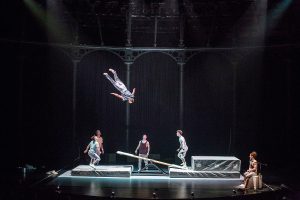
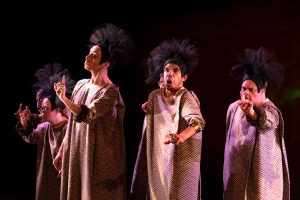


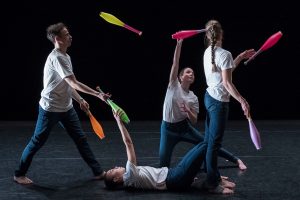
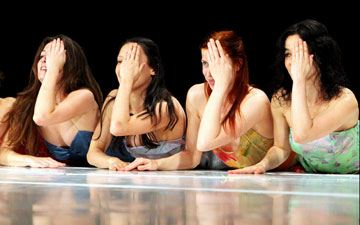
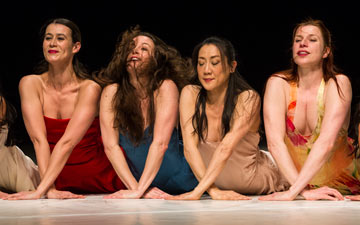

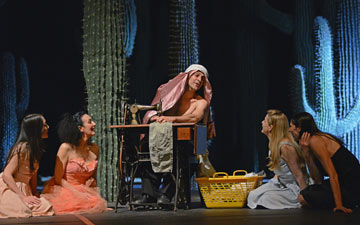

You must be logged in to post a comment.